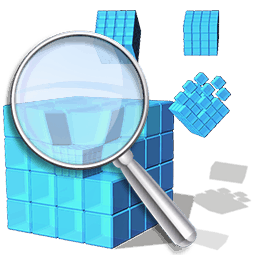How To Clean Registry After Software Uninstall
 Just because a program is uninstalled from Windows it doesn't automatically mean all of its components are erased as well. In fact, simply uninstalling unwanted software is like smoking out an empty hornet's nest that, once the dangerous gas is no more, can be inhabited by those pesky hornets again. Translated to the world of computing, uninstalled programs often leave so-called leftovers in hard drives and registries, thus consuming valuable space and memory. And obviously the more programs are installed and uninstalled the more junk will fill the computer, slowing it down over time.
Just because a program is uninstalled from Windows it doesn't automatically mean all of its components are erased as well. In fact, simply uninstalling unwanted software is like smoking out an empty hornet's nest that, once the dangerous gas is no more, can be inhabited by those pesky hornets again. Translated to the world of computing, uninstalled programs often leave so-called leftovers in hard drives and registries, thus consuming valuable space and memory. And obviously the more programs are installed and uninstalled the more junk will fill the computer, slowing it down over time.
Not even state of the art Windows 10 computers are safe from leftovers and unfortunately there are no signs of getting rid of them soon with updates focusing more on fancy design elements than actual usability. This is why it is vital to get rid of these 'stowaways' whenever possible – and there are two possible ways you can do it: wiping them out manually or using the uninstall feature of a third party program, like registry cleaners.
Removing Leftovers Manually
Although full and proper software removal takes some time and requires tampering a bit with the registry, it guarantees that no leftovers will poison your computer anymore – especially if you follow these simple steps:
- Remove the program the regular way by accessing the Control Panel, selecting Uninstall a program, right-clicking on the unwanted software and selecting uninstall. This is as far as most people go, but it's far from enough, so let's proceed to the next step.
- After uninstalling the program from the Control Panel, open the Start menu, type %programfiles% and %appdata% into the search bar – strictly one at a time – and hit enter.
This will open system folders where you should find the first leftovers of the program deleted previously. Inside each corresponding system folder there are more folders with the names of the programs. Delete the ones with the name of the program you uninstalled from both system folders.
- Once the system folders are taken care of comes the removal of the corresponding registry keys. This is the most delicate step, therefore be extremely careful when performing it, as tampering with a computer's registry can have irreversible and harmful consequences for your machine. So just in case, create a safety backup before performing this step.
Open the start menu again, type Regedit in the search bar and hit enter to be taken to the 'heart' of your computer. Then search for registry entries left by the deleted program on three different registry keys – again, one at a time: HKEY_CURRENT_USER\Software, HKEY_LOCAL_MACHINE\SOFTWARE and HKEY_USERS.DEFAULT\Software. Once inside each key, search the folders on the left for the one with the name of the program you uninstalled or use CTRL + F for finding it faster. Any keys you find with the corresponding name can be deleted, but keep that backup at hand just in case.
- And last but not least, clean the Temp folder, the place that holds all the temporary files on your Windows computer. You can simply access said folder by typing in %temp% and temp (one at a time) in the Start menu's search bar.Unlike with files presented in previous steps, the entire content of this folder can be deleted without remorse; however, should any error message appear, leave the files untouched or try to restart the computer and perform this step again.
Removing Leftovers Automatically
 If you don't fancy dealing with program leftovers manually you can resort to third party software and let the program do the dirty job for you. Registry cleaners like ZookaWare PC Cleaner are equipped with uninstall features designed to take care of situations like these.
If you don't fancy dealing with program leftovers manually you can resort to third party software and let the program do the dirty job for you. Registry cleaners like ZookaWare PC Cleaner are equipped with uninstall features designed to take care of situations like these.
In fact, using such a program is not only easier, faster and safer, but like their names imply, they also have registry cleaning capabilities to take good care of your computer without having to mess with it. Registry cleaners work by performing a deep scan on your computer and presenting the problem, including empty registry keys, temporary files and more. Furthermore, they also bring additional computer optimization tools to the mix as well with which you can give new life to your device. And to make it even better, they feature restore points and the ability to easily go back to previous configurations, so you never have to worry about deleting important files again.
Best Registry Cleaners of 2021
| Rank | Software | Info | Visit |
| 1 | Editor's Choice 2021  |
| Visit CyberlabFree Download & Scan |
| 2 |  |
| Visit |
| 3 |  |
| Visit |
How To Clean Registry After Software Uninstall
Source: https://registry-cleaners.bestreviews.net/how-to-remove-leftovers-after-uninstalling-software-on-windows-10/
Posted by: walstonlond1985.blogspot.com

0 Response to "How To Clean Registry After Software Uninstall"
Post a Comment